Sables and ferrets could easily be confused, given how similar they are. Still, there are some major differences between them that can help us to understand what makes them unique. Despite their similarities, sables and ferrets have unique roles in the world and occupy different ecological niches. Today, we are going to explore these differences in order to understand them as individuals a bit better. Let’s discover: Sable vs Ferret, what makes them different?
Comparing a Sable and a Ferret
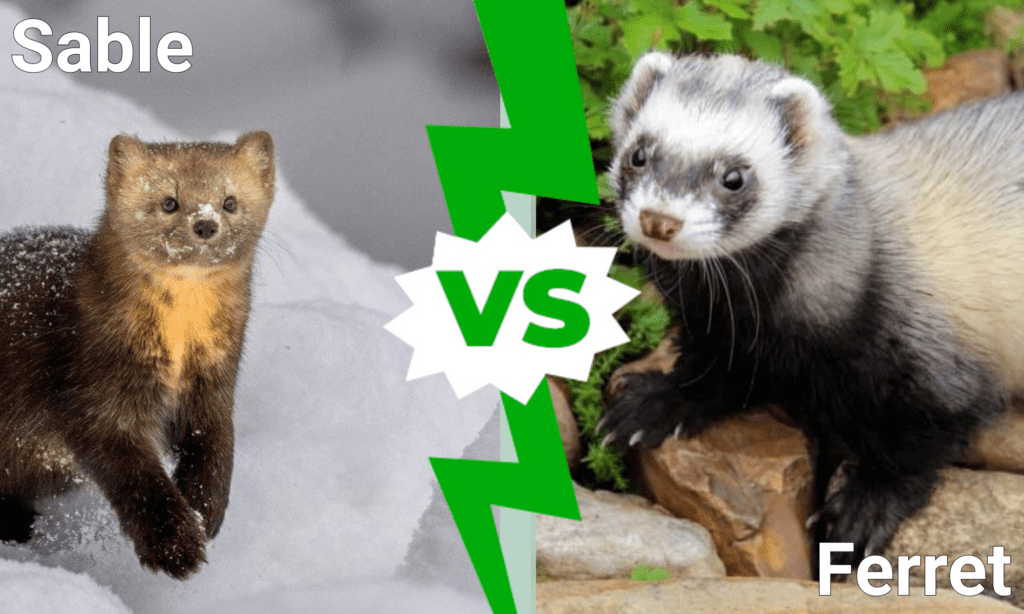
| Sable | Ferret | |
|---|---|---|
| Size | Length: 15-22 inches Weight: 2-4 lbs | Length: 10-21 inches Weight: 1.5-4 lbs |
| Appearance | Long, lithe animals with an especially luxurious coat. Can come in various fur colors, depending on the region. | Long, slender animals. Usually white with black legs and tail. Often have white faces and black eye masks. |
| Fur | Summer and winter pelts differ. Extremely soft and highly sought in trade. | No use in the fur trade. |
| Distribution | Russia, Mongolia, Kazakhstan, China, North Korea, and Hokkaido, Japan. | Worldwide as pets, although they are banned in many places. |
| Diet | Omnivores. Hares, weasels, birds, carrion, fish, berries. | Carnivorous. Often eat high-protein cat food. |
| Relationship with humans | Highly valued in the fur trade. | Used in ferreting and hunting. Extremely popular pet. Used for disease testing. |
The 6 main differences between a Sable and a Ferret
The main differences between a sable and a ferret are that sables are wild, omnivorous, and used for the fur trade. Ferrets are domesticated, carnivorous, and used for hunting as kept as pets.
Sables and ferrets are quite similar and classified together as Mustelids. Mustelids vary in size but include members like the domesticated ferret, sables, martens, mink, badgers, and otters. They are extremely diverse, with a total of 70 species globally. As such, sables and domesticated ferrets are closely related.
While sables are slightly larger than ferrets on average, they are close enough where it probably isn’t all that noticeable. Since ferrets are domesticated, it is much easier for them to find food, pushing their average weight up when compared to a wild sable. Additionally, sables have a more feline appearance and closely resemble martens. Ferrets are elongated and have small heads but more resemble that of a weasel or a polecat.
The sable is widely recognized for its incredibly luxurious fur. Since ancient times, wild sables have been killed for use in the fur trade, especially in luxury settings. Sable fur is so expensive that it is usually used as trim, not as the bulk of a garment. Ferrets aren’t used in the fur trade.
Other differences between sables and ferrets include their distribution, diets, and relationship with humans. Let’s explore all that and more below!
Sable vs Ferret: Size
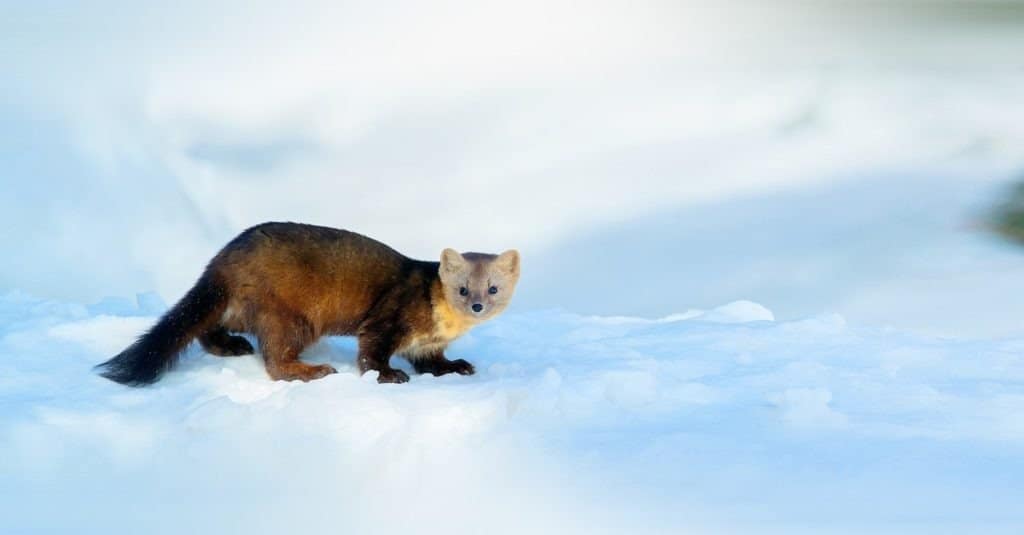
The sable is slightly larger than the average domesticated ferret.
©Wang LiQiang/Shutterstock.com
Sables generally measure 15-22 inches from their head to the base of their tail, with their tail adding an additional 4-5 inches. Additionally, sables weigh between 2 and 4 lbs, with males being slightly longer and heavier than the average female.
Domesticated ferrets come in a few varieties, but they average around 20 inches long. Additionally, ferrets weigh between 1.5 and 4 lbs, with domestication helping to increase their body weight. Ferrets are sexually dimorphic, with males being significantly larger than females.
Sable vs Ferret: Appearance

Sables are sleek and resemble martens.
©A F Goss/Shutterstock.com
The sable is a sleek, athletic appearing animal. It is distinctly a mustelid and is closely related to marten. As such, it has thick, soft fur that can come in shades of brown, although some have patches of white or yellow. Sable ears are large and distinct, and they have more pointed faces than ferrets.
Ferrets are widely recognized as they are common in pet stores globally. They have long, slender bodies, short faces, and small ears. Most ferrets have a white undercoat around their midsection with longer black hairs. Certain breeds often have white faces, black eye masks, and dark black legs.
Sable vs Ferret: Fur
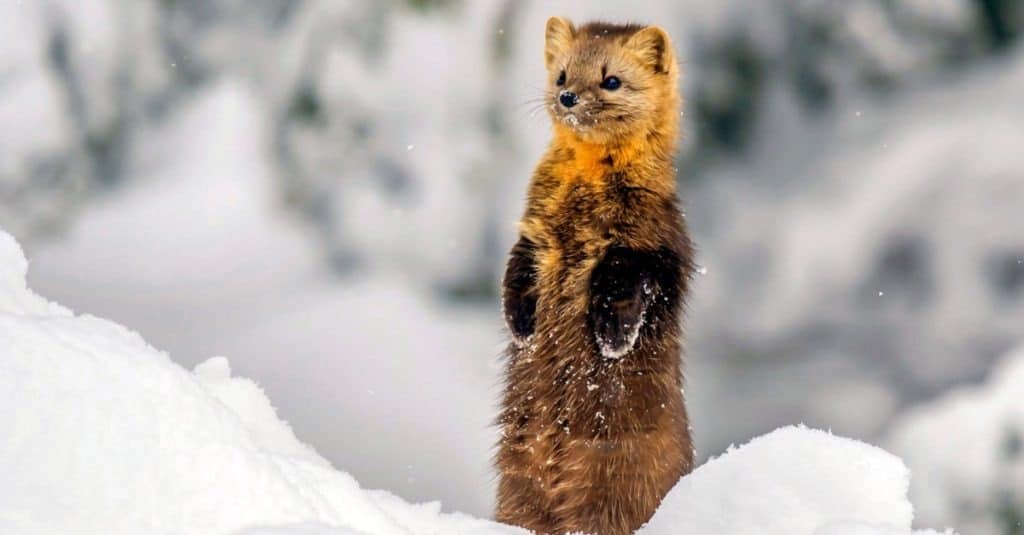
Sables have some of the most valuable furs in the world.
©Wang LiQiang/Shutterstock.com
The sable is known to have some of the highest quality furs of any animal in the world. Since the Middle Ages, people have sought sable fur for use in extremely luxurious garments and applications. Part of what makes sable fur so sought-after is its extreme silkiness and ability to retain smoothness no matter the direction it’s stroked. Russian sables are considered the world’s best. Due to its price, sable fur is often used to hem or decorate garments and doesn’t make up the bulk of the piece.
Ferrets have no real use in the fur trade.
Sable vs Ferret: Distribution

Ferrets are found with humans who keep them as pets.
©JLRphotography/Shutterstock.com
Ferrets are domesticated animals that likely came from polecats or the European polecat. Domesticated ferrets can be found anywhere they are kept as pets. European polecats can be found throughout most of Europe.
The sable prefers forest habitats and can be found in Rusia, Mongolia, Kazakhstan, China, North Korea, and Japan.
Sable vs Ferret: Diet
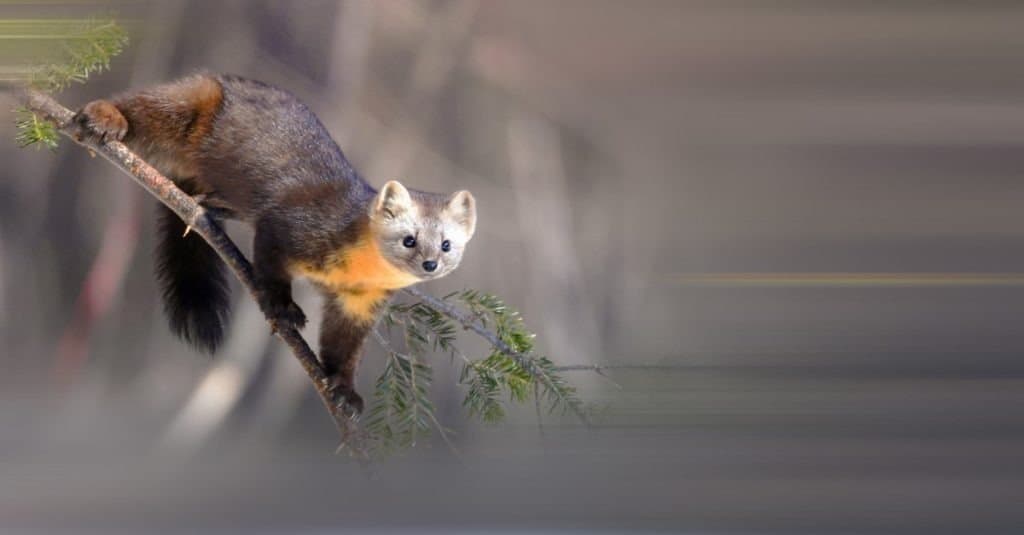
Sables are omnivores and eat small mammals, berries, and carrion.
©Wang LiQiang/Shutterstock.com
Wild sables have extremely varied diets. Sables are omnivores that eat different things depending on the season. In warm months, sables eat hares and other mammals. During colder months, they often eat berries, rodents, carrion, and more.
Domesticated ferrets usually eat store-bought food. Ferrets are primarily carnivores (like cats) and need high-protein foods. Often, pet ferrets are fed high-quality cat foods.
Sable vs Ferret: Relationship with humans
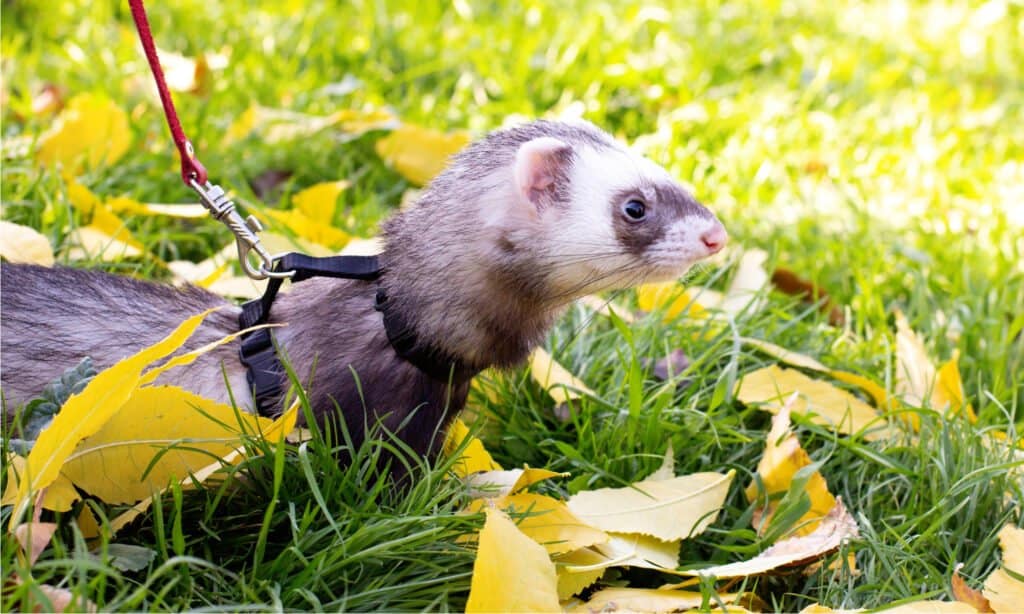
Ferrets are extremely popular as pets.
©Irina Vasilevskaia/Shutterstock.com
Ferrets have a closely intertwined relationship with humans and have for a long time. They were originally domesticated for use in hunting. Ferrets are superb hunters and can be taught to hunt rabbits, hares, mice, and rats. In modern times, ferrets are still used in hunting but are more commonly kept as pets. There are over 5 million pet ferrets in the United States today. Additionally, ferrets are extensively used as research animals in the fields of neuroscience and infectious diseases.
Sables have been hunted for hundreds of years by humans. Recently, sable farms have cropped up in the hopes of establishing reliable fur that is somewhat more sustainable than wild-caught sables. Still, wild-caught sables from Siberia are considered the highest quality of them all.
The photo featured at the top of this post is © Wang LiQiang/Shutterstock.com
Thank you for reading! Have some feedback for us? Contact the AZ Animals editorial team.






